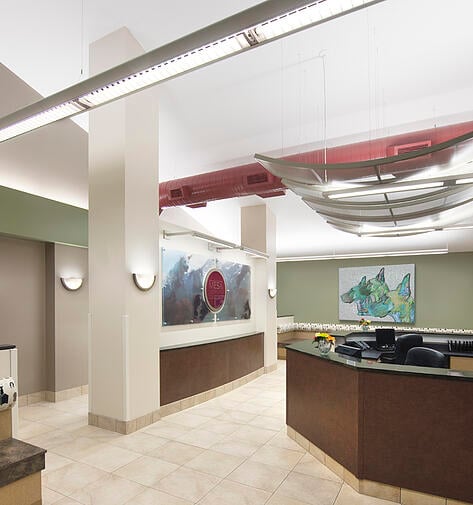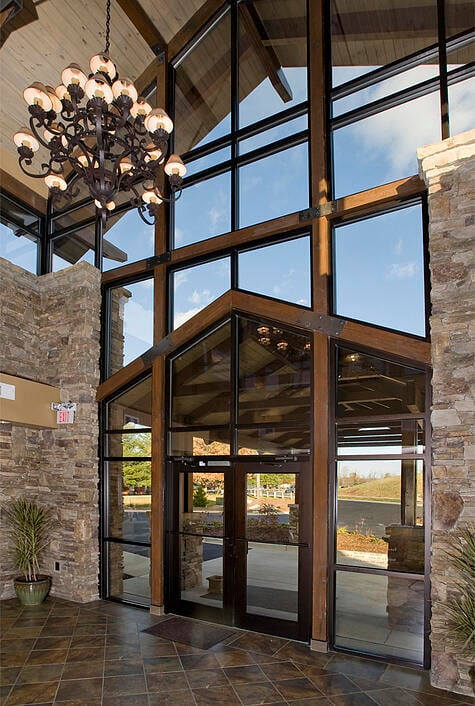
How can I control noise with a cathedral ceiling?
Even though angled surfaces reflect less noise, sound reduction is still a concern with cathedral ceilings, says Sal Longo Jr., co-owner of Crosby Longo Architecture Studio in New Orleans. You can alleviate that concern by planning for sound control before you build. His advice:
Construct the cathedral ceiling as a suspended ceiling (also known as a drop ceiling) with acoustic tile. Suspended acoustic tile is more expensive than sheetrock, but you’ll likely save on labor costs because of the time-consuming nature of sheetrocking high, angled spaces. Longo says this additional cost is worth the extra sound control. Plus, if you want something fancier than a plain, grid-type ceiling, acoustic tiles come in decorative styles and colors.
If your practice already has a cathedral ceiling, you can solve your noise problems simply and cost-effectively by hanging acoustic baffles. These lightweight panels can be installed on ceilings or walls, and they come in many colors and patterns, too.
Before installing the baffles, Longo suggests hiring a company to test your facility for decibel levels and sound reflection. The test results will help you choose the correct baffle thickness and placement.
Whether you’re starting from scratch or working with an existing ceiling, another chief consideration is waterproofing, Longo says. For cathedral ceilings in kennel or grooming areas, install moisture-resistant acoustic tiles or baffles.
Cathedral ceilings give clinics an open, airy feel that clients and employees love. Don’t let noise spoil the atmosphere.

